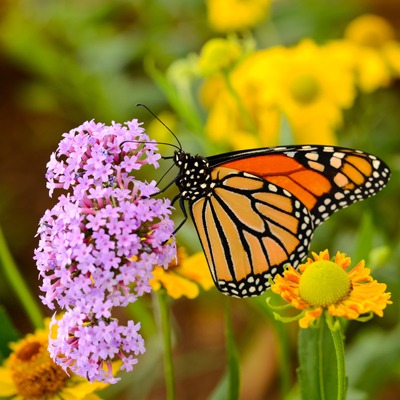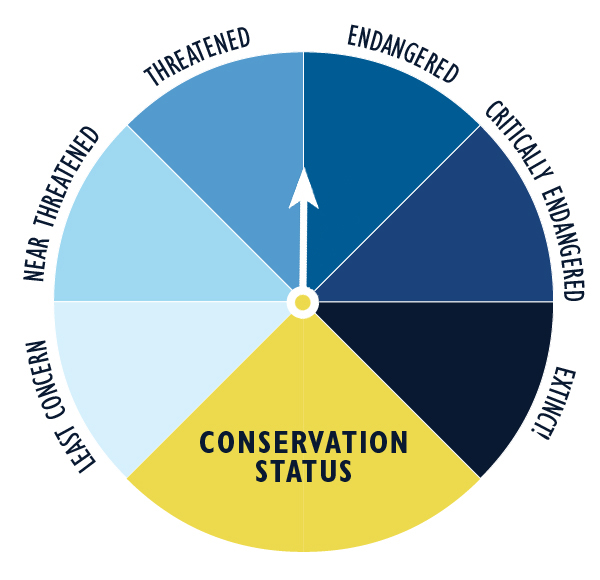
About Monarch Butterfly
Henry Vilas Zoo has partnered with Monarch Watch, a program run through the University of Kansas to create, conserve, and protect monarch butterfly habitats. There are Monarch Waystations at the zoo, with the sites providing milkweed plants, nectar sources, and shelter for monarch butterflies as they migrate across North America. The eastern North American population is in decline due to a loss of food and habitat. You can help! Learn more about creating your own waystation at home here.
Help us continue you our conservation work by making a donation today!
Habitat
The monarch migration is one of the greatest natural phenomena in the insect world. The butterflies know the correct direction to migrate, even though they have never made the journey before, by following an internal compass! They travel up to 2,500 miles (4,025 km) to hibernate in warmer climates for the winter. In North America, monarchs that live east of the Rocky Mountains migrate to Mexico and monarchs that live west of the Rocky Mountains migrate to California. Monarch butterflies are found in meadows, roadsides, and sandy areas where milkweed plants grow in North America.
Diet
Monarchs, like all butterflies, change their diet as they develop. During the caterpillar stage, they live exclusively on milkweed plants. Milkweed plants contain glycoside toxins that are harmless to the monarch, but poisonous to predators. Adult monarch butterflies feed on nectar from a wide range of flowers, including milkweeds.
Family Life
The metamorphosis from egg to butterfly takes about four weeks. Monarch eggs are small, about the size of a pinhead, and hatch in about three to four days. The larva (caterpillar) that hatches is about 0.5 cm (0.2 in.). This stage lasts for about two weeks. Within this time, the larva will molt five times. During this stage, the larva spins silk and attaches to a twig and is considered a pupa, the inactive stage of metamorphosis between larva and adult. It will hang for about 2 weeks until the adult emerges. This completes the metamorphosis process before the monarchs hatch into butterflies!
Conservation Status
The conservation status of the Monarch Butterfly is classified as vulnerable.
Threats
- Sadly enough, the monarch population has sharply declined by more than 90% since the 1990s. One major threat has been climate change, which hinders the butterfly’s migration patterns and affects the rainfall in their natural habitat.
- Pesticides also pose a threat, as the chemicals kill off milkweed which is necessary for the butterfly’s survival.
- Habitat loss and fragmentation prevents the population to thrive in primarily the United States and Mexico. Human interference through development and pollution through industrially related causes can negatively affect the monarch’s population.
Facts about Monarch Butterfly
Class:
Insecta (insect)Order:
Lepidoptera (butterflies, moths)Family:
Danaidae (milkweed butterflies)Genus:
Danaus (milkweed butterflies)Species:
Danaus plexippus (monarch butterfly)Life Span:
Adult monarch butterflies that emerge in spring and early summer live 4 – 5 weeks. Migrating generations, which emerge in late summer and fall, live 8 – 9 months.Size:
Caterpillar: 2.75 inches (7 cm) / Butterfly: 3.5 – 4.8 inches wingspan (9 – 12 cm)Weight:
0.27 – 0.75 grams
Fun Facts
- Monarch caterpillars store a chemical in their bodies from the milkweed plants they eat that make them poisonous.
- Orange is a warning color that lets animals know that they taste bad or can make them sick – animals learn quickly not to eat orange butterflies.
- Butterflies’ colors come from tiny scales which cover the wings; colors may aid them in species recognition and camouflage, or by warning away predators.